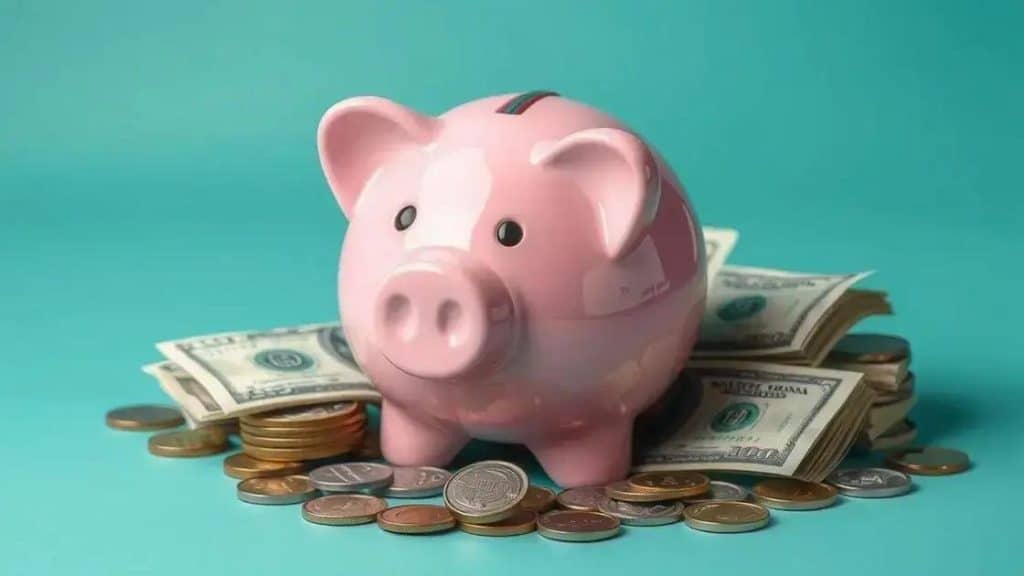Strategies for building an emergency fund effectively

Building an emergency fund involves saving three to six months’ worth of living expenses in accessible accounts like high-yield savings or money market accounts to ensure financial security during unexpected situations.
Strategies for building an emergency fund can seem daunting, but they’re essential for financial stability. Have you ever wondered how much peace of mind a solid savings plan can bring? Let’s unpack some effective approaches together.
Understanding the importance of an emergency fund
Understanding the importance of an emergency fund is crucial for anyone looking to achieve financial security. This fund serves as a safety net, protecting you from unexpected expenses like medical bills or car repairs. Have you ever faced an unplanned expense that left you worried? Having an emergency fund can greatly reduce that stress.
Why an Emergency Fund Matters
In today’s world, surprises can happen at any time. Whether it’s job loss or urgent home repairs, your emergency fund can help you manage these situations without going into debt. It gives you peace of mind and helps you stay financially stable.
How Much Should You Save?
Many experts recommend saving between three to six months’ worth of living expenses. This way, you have enough to cover your basic needs while you recover from any unexpected changes. Setting a goal can motivate you to reach your savings target faster. Think about the amount that makes you feel secure and start working towards it.
- Assess your monthly expenses.
- Calculate the total needed for 3-6 months.
- Set a monthly saving goal.
- Adjust your household budget to accommodate savings.
Building up this fund is not just about setting aside money; it’s about creating a cushion for your financial life. Consider automating your savings. This will help you consistently add money to your fund without even thinking about it. Just like paying bills, saving should be a priority.
Another great tip is to boost your savings when you can, like when you receive a bonus or tax refund. Instead of spending this extra money, consider putting it directly into your emergency fund. This will help your savings grow faster and make you feel more secure.
Where to Keep Your Emergency Fund
Choosing the right place to store your emergency fund is also essential. Look for a savings account that offers a good interest rate but is still easily accessible when you need it. You want to keep this money separate from your daily spending to avoid the temptation to use it.
In conclusion, understanding the importance of an emergency fund is a significant step towards maintaining your financial health. By setting clear goals, automating your savings, and finding the right account for your fund, you are ultimately investing in your peace of mind during uncertain times.
How much should you save for emergencies?

Determining how much you should save for emergencies is crucial for your financial planning. It’s not just about saving a random amount; it’s about creating a solid foundation for your financial security. Many experts suggest saving enough to cover three to six months’ worth of living expenses. This can seem daunting, but it’s achievable with a structured approach.
Calculating Your Needs
Start by assessing your monthly expenses. Consider rent or mortgage, utilities, groceries, and any other bills you regularly pay. Once you know your monthly total, multiply that amount by three to six. This gives you a target for your emergency fund.
- List all your monthly essentials.
- Add any discretionary spending to the mix.
- Use this total to determine your savings goal.
Now, creating a realistic savings plan is key. Many people find it helpful to break their savings goal into smaller, manageable chunks. For instance, if your target is $9,000, that’s only $750 a month for a year. Consider automating your savings transfers to make this easier.
Adjusting for Your Lifestyle
If your lifestyle includes more variables, like dependents or debt, you may want to lean toward six months. This extra buffer can protect you during financial hardships, giving you peace of mind. Remember, your situation might change over time, so it’s wise to reassess your needs regularly.
Also, reflect on your job stability. If you work in a field that fluctuates, having a larger cushion can provide extra security. Overall, the idea is to build an emergency fund that fits your unique lifestyle and Risk tolerance.
Monitoring progress is also essential. Set benchmarks for your savings journey. For instance, celebrate milestones when you reach certain savings thresholds. This can motivate you as you work towards your overall goal.
Best strategies to build your emergency fund
Building your emergency fund is a smart financial strategy that protects you from unexpected expenses. To start, it’s important to establish a plan that suits your lifestyle and financial situation. Here are some effective strategies to consider.
Automate Your Savings
One of the best ways to build your fund is to automate your savings. By setting up an automatic transfer from your checking to your savings account, you ensure that money goes into your emergency fund regularly. You can start by transferring a small amount each paycheck and increase it as you become more comfortable.
Set Specific Goals
Set a specific savings goal for your emergency fund. Having a target gives you something to aim for and keeps you motivated. For example, you might decide to save $5,000 in a year. Break this down into monthly contributions, like around $417 a month. This makes the goal seem less daunting.
- Determine how much you need for emergencies.
- Break it down into manageable amounts.
- Adjust savings as needed based on life changes.
Research shows that people are more likely to achieve their savings goals when they have a specific plan. Tracking your progress can also help you stay focused and encourage you when you see how far you’ve come.
Reduce Unnecessary Expenses
Take a close look at your monthly spending habits. Are there areas where you can cut back? By reducing unnecessary expenses, you can redirect that money into your emergency fund. Even small changes can add up. Consider dining out less often, canceling unused subscriptions, or shopping less frequently.
Another alternative is to take on a temporary side job. Freelancing, dog walking, or tutoring can provide additional income that you can allocate directly to savings. Using this extra cash can boost your saving rate significantly.
Finally, using windfalls—such as tax refunds, bonuses, or gifts—can also be a great way to increase your fund. Instead of spending this money, consider saving a significant portion. This can help you reach your goal faster and reinforce the habit of saving.
Where to keep your emergency fund for maximum growth

Knowing where to keep your emergency fund can make a big difference in its growth. It’s essential to find a safe place that also offers some return on your savings. This can help you make the most out of every dollar you save while keeping it accessible for emergencies.
High-Yield Savings Accounts
One of the best options is a high-yield savings account. Banks offer these accounts with interest rates much higher than traditional savings accounts. Your money can grow while remaining easily reachable when you need it. Be sure to shop around for the best rates, as they can vary significantly from one bank to another.
Money Market Accounts
Another option is a money market account. Similar to high-yield savings accounts, these accounts often provide higher interest rates and some checks for withdrawals. However, they might require a higher minimum balance. If you expect to keep a substantial amount in your fund, a money market account can be a solid choice.
- Look for accounts with low fees.
- Check withdrawal limits to ensure flexibility.
- Consider online banks, which often offer better rates.
Keeping your fund in a separate account can also help you avoid the temptation to dip into it for non-emergencies. This separation ensures that your funds are reserved purely for unexpected events, which can aid in financial discipline.
Certificates of Deposit (CDs)
If you can commit your money for a short time, consider a Certificate of Deposit (CD). CD accounts generally offer higher interest rates, especially for longer terms. Just be mindful of the withdrawal penalties for accessing your money before the term ends. If you’re sure you won’t need that money for a specific period, a CD can be a smart way to boost growth.
While it is important to focus on growth, consider your access needs. In most emergencies, you may need quick access to these funds. Therefore, it’s often best to split your emergency fund. For example, keep a portion in a high-yield savings account for immediate accessibility, while placing the remainder in a money market account or CD for higher interest growth.
In conclusion, building and maintaining an emergency fund is essential for financial stability. By understanding how much to save, utilizing effective strategies for saving, and choosing the right accounts for growth, you set yourself up for success. Remember, the goal is to protect yourself from unexpected expenses while ensuring your money works for you. Whether you opt for high-yield savings accounts, money market accounts, or CDs, what matters is finding a solution that best fits your needs. Start small, stay consistent, and watch your emergency fund grow!
FAQ – Common Questions about Building an Emergency Fund
What is an emergency fund?
An emergency fund is money set aside to cover unexpected expenses, providing financial security in case of emergencies.
How much should I aim to save in my emergency fund?
It’s generally recommended to save three to six months’ worth of living expenses to be adequately prepared.
Where should I keep my emergency fund?
Consider high-yield savings accounts, money market accounts, or short-term CDs for better interest rates while keeping the funds accessible.
What are some strategies for building my emergency fund?
Automate your savings, cut unnecessary expenses, and set clear saving goals to effectively increase your emergency fund.





